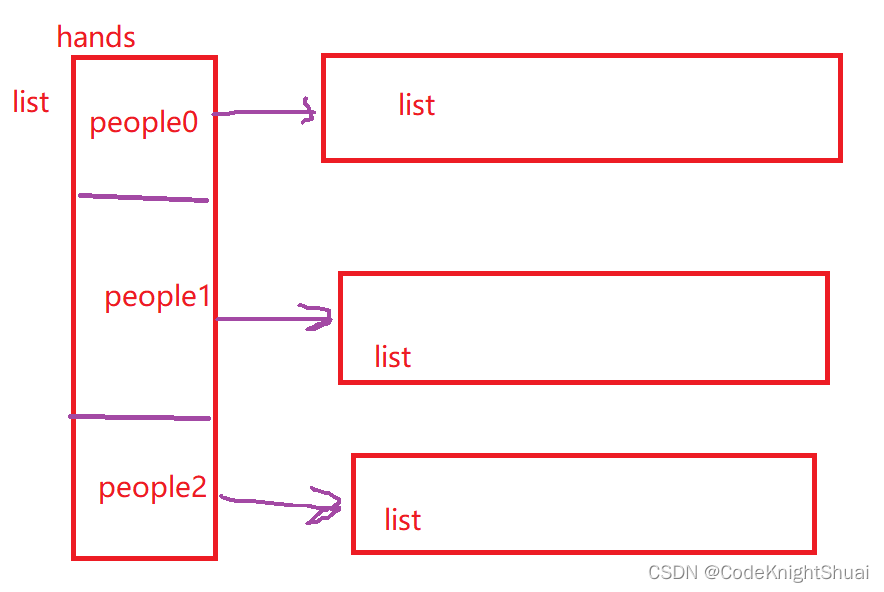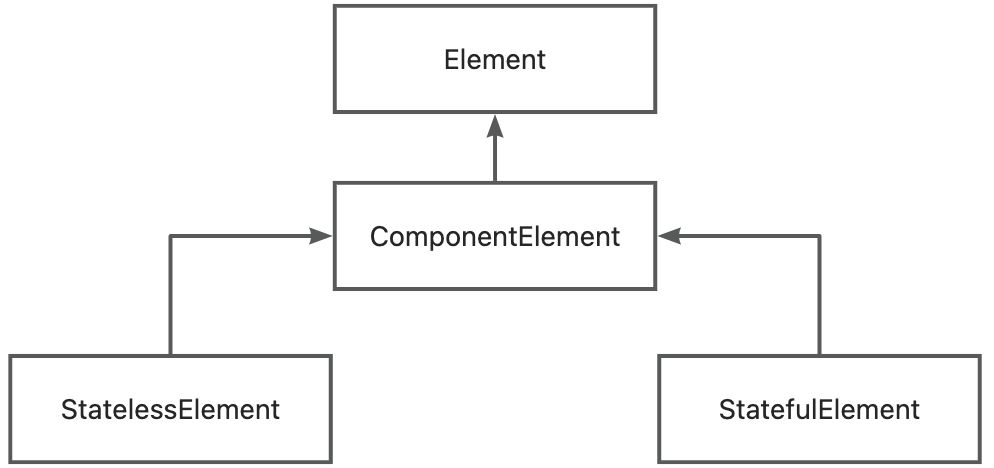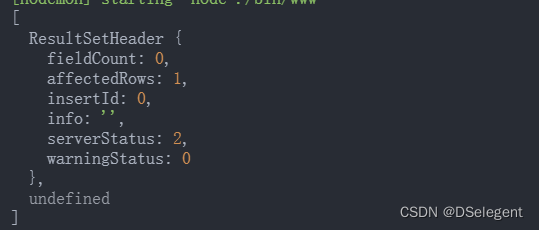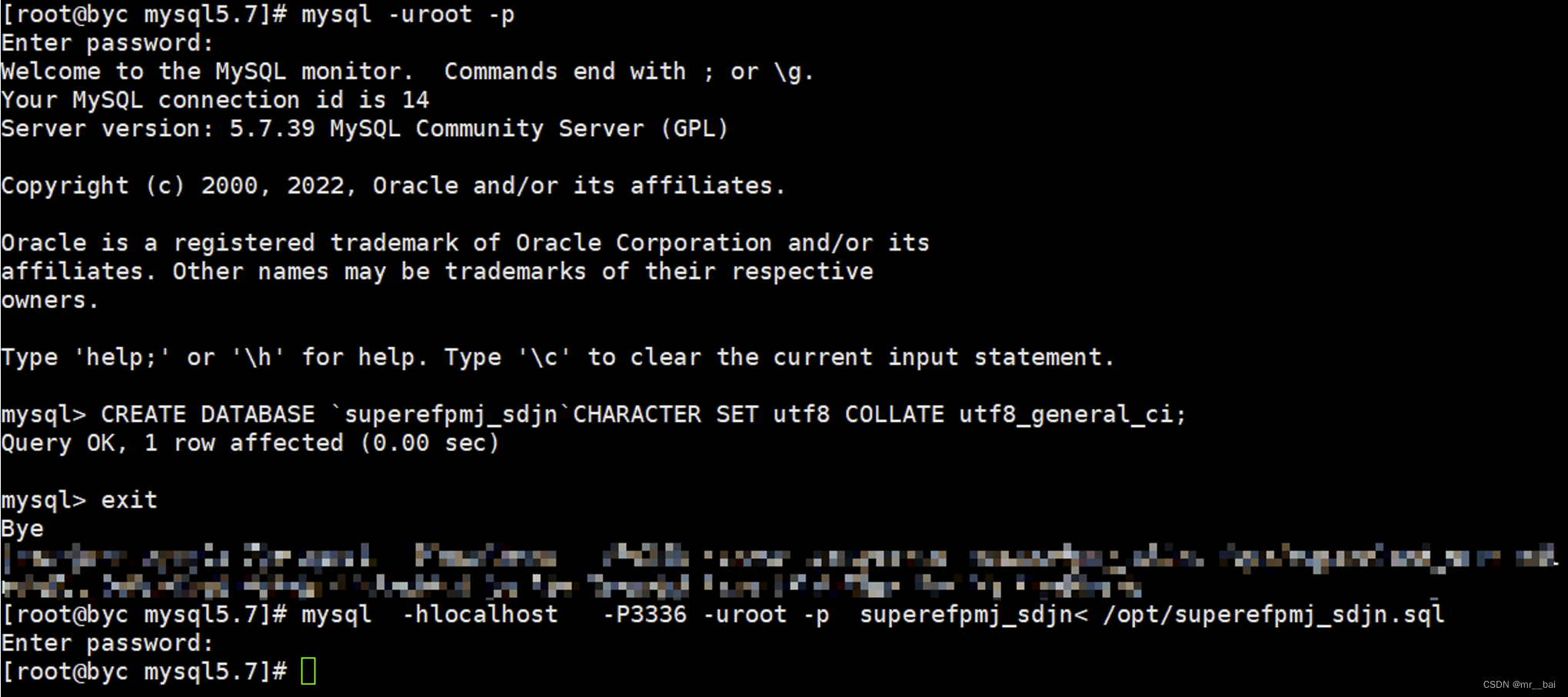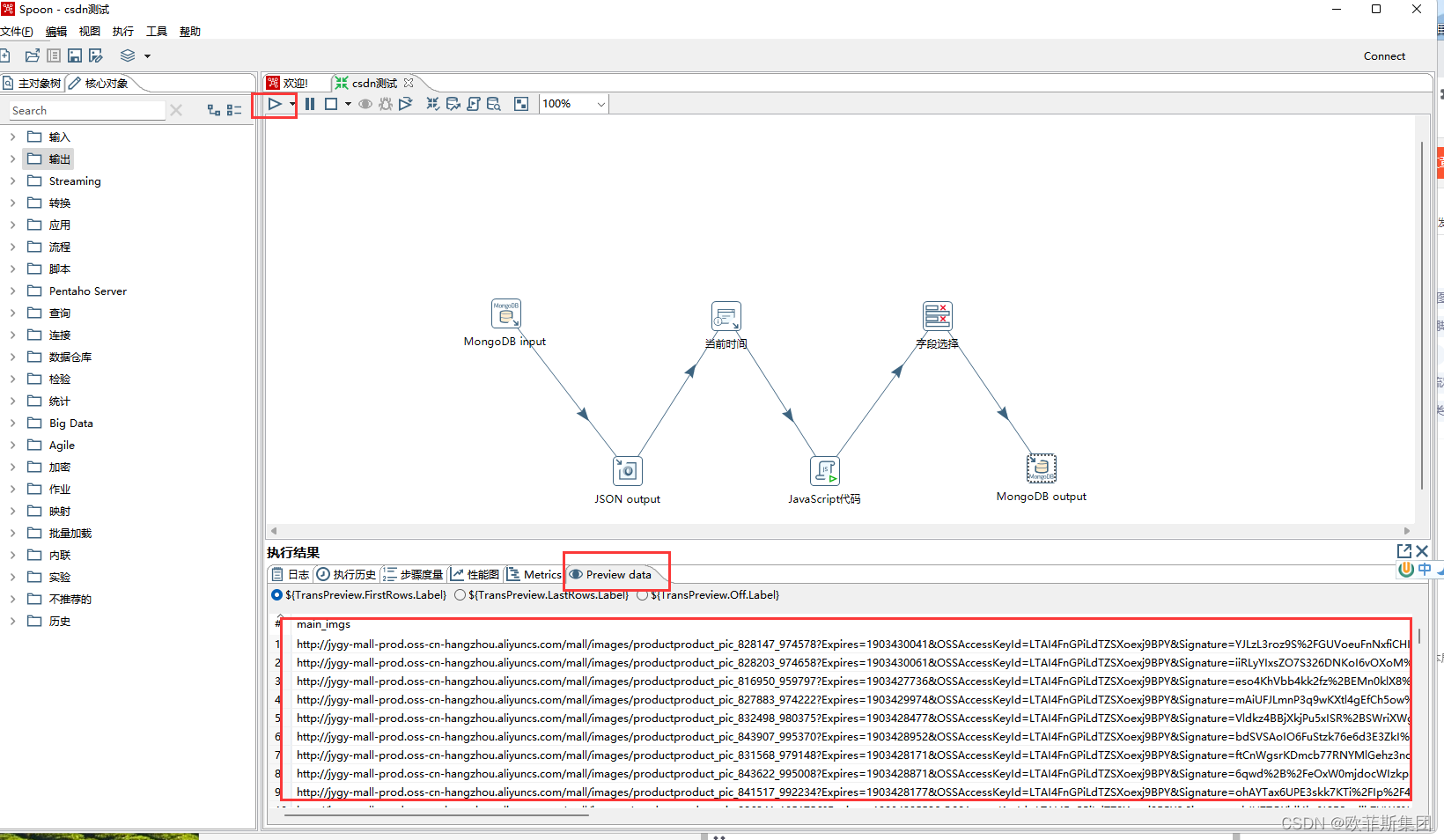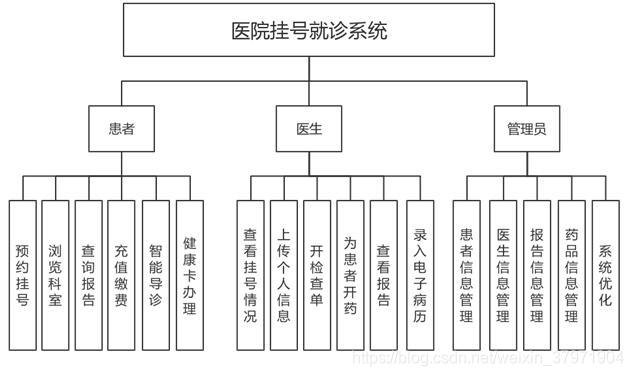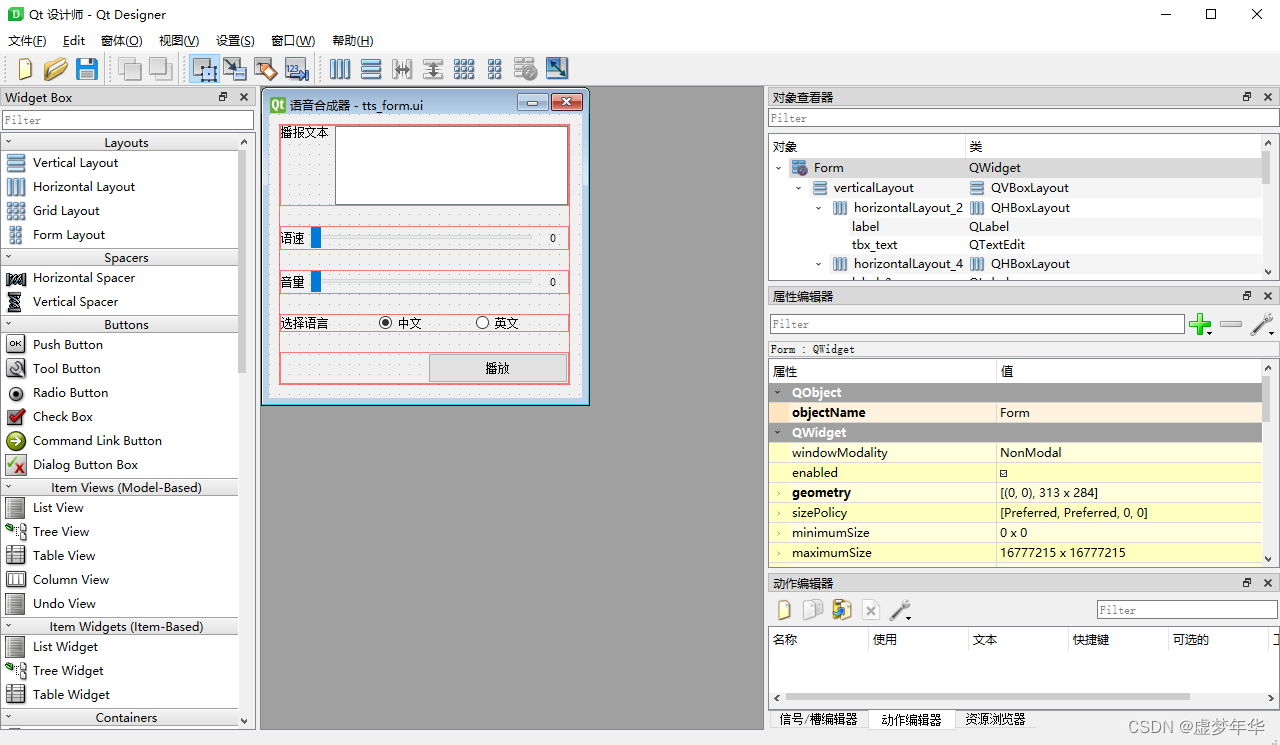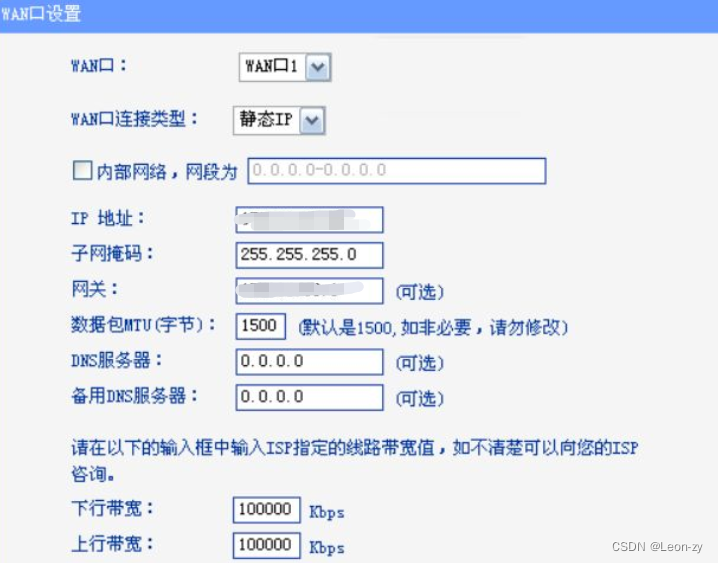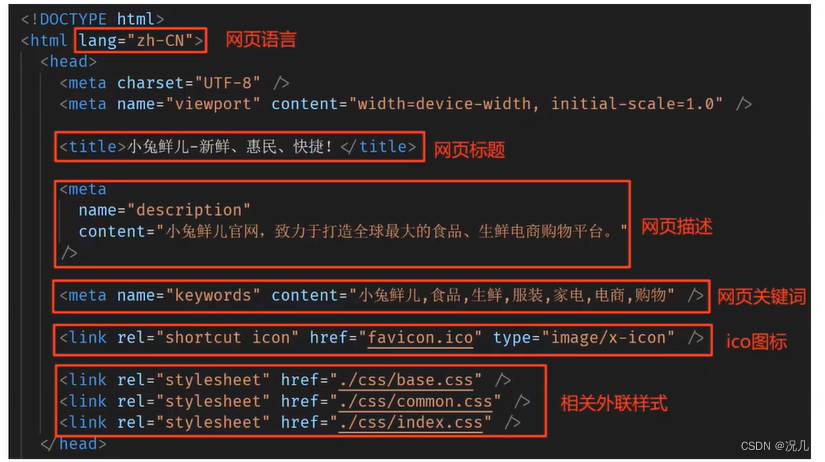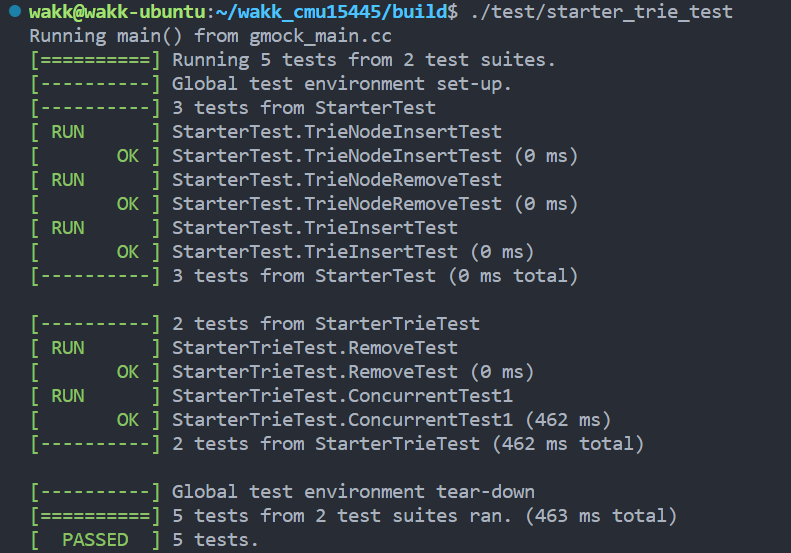-
什么是集合类?
Java当中的集合类,其实就是封装号的数据结构
原始的数据结构——>Java当中封装成的集合对应的那个原始的数据结构——>用Java封装的集合对应的。
集合类所在的包:java.util这个包底下 -
顺序表的底层是一个数组,数组作为ArrayList类的成员,在这个类里面提供了对数组的增删改查等操作
ArrayList类中方法的实现:
import java.util.Arrays;
public class MyArraylist {
public int[] elem; //顺序表的数组
public int usedSize;//当前顺序表数组的大小是几个
//默认容量
private static final int DEFAULT_SIZE = 10; //常量
public MyArraylist() {
this.elem = new int[DEFAULT_SIZE]; //调用构造方法对数组进行初始化
}
/**
* 打印顺序表:
* 根据usedSize判断即可
*/
public void display() {
for (int i = 0; i < this.usedSize; i++) { //要学会使用this
System.out.print(this.elem[i] + " ");
}
System.out.println();
}
// 新增元素,默认在数组最后新增
public void add(int data) {
if(isFull()) {
//扩容
this.elem = Arrays.copyOf(this.elem,this.elem.length*2);
}
this.elem[usedSize] = data;
this.usedSize++;
}
/**
* 判断当前的顺序表是不是满的!
*
* @return true:满 false代表空
*/
public boolean isFull() {
if (this.usedSize == this.elem.length) {
return true;
}
return false;
//或者直接一条语句
//return this.usedSize == this.elem.length;
}
private boolean checkPosInAdd(int pos) {
if (pos >= 0 && pos <= this.usedSize) {
return true;//合法
}
return false;
}
// 在 pos 位置新增元素
public void add(int pos, int data) {
if (!checkPosInAdd(pos)) {
throw new AddIndexOutExcepetion("新增元素的位置pos不合理");
}
if (isFull()) {
this.elem = Arrays.copyOf(this.elem,this.elem.length*2);
}
//移动数据
for (int i = pos; i < usedSize; i++) {
this.elem[i + 1] = this.elem[i];
}
this.elem[pos] = data;
this.usedSize++;
}
// 判定是否包含某个元素
public boolean contains(int toFind) {
for (int i = 0; i < this.usedSize; i++) {
if (this.elem[i] == toFind) {
return true;
}
}
return false;
}
// 查找某个元素对应的位置
public int indexOf(int toFind) {
for (int i = 0; i < this.usedSize; i++) {
if (this.elem[i] == toFind) {
return i;
}
}
return -1;
}
//判断获取元素的位置是否合法
public boolean checkPosInGet(int pos) {
if (pos < 0 || pos >= this.usedSize) {
return false;
}
return true;
}
// 获取 pos 位置的元素
public int get(int pos) {
if (!checkPosInGet(pos)) {
throw new GetIndexOutExcepetion("查找的位置不在范围内");
}
if (isEmpty()) {
throw new ArrayEmptyException("数组为空无法获取pos位置元素");
}
return this.elem[pos];
}
private boolean isEmpty() {
if (usedSize == 0) {
return true;
}
return false;
}
// 给 pos 位置的元素设为【更新为】 value
public void set(int pos, int value) {
if (!checkPosInGet(pos)) {
throw new GetIndexOutExcepetion("更新的位置不合法");
}
if (isEmpty()) {
throw new ArrayEmptyException("数组为空");
}
this.elem[pos] = value;
}
/**
* 删除第一次出现的关键字key
*
* @param key
*/
public void remove(int key) {
if (isEmpty()) {
throw new ArrayEmptyException("顺序表为空,不能删除");
}
int index = indexOf(key); //调用方法获得key的下标
if (index == -1) {
System.out.println("没有要删除的关键字");
return;
}
for (int j = index; j < this.usedSize; j++) {
this.elem[j] = this.elem[j+1];
}
this.usedSize--;
// for (int i = 0; i < this.usedSize; i++) {
// if (this.elem[i] == key) { //可通过上述完成的方法来完成
// for (int j = i; j < this.usedSize; j++) {
// this.elem[j] = this.elem[j+1];
// }
// this.usedSize--;
// break;
// }
// }
}
// 获取顺序表长度
public int size() {
return this.usedSize;
}
// 清空顺序表
public void clear() {
this.usedSize = 0;
}
}
自定义异常:
public class AddIndexOutExcepetion extends RuntimeException{
public AddIndexOutExcepetion() {
}
public AddIndexOutExcepetion(String message) {
super(message);
}
}
public class ArrayEmptyException extends RuntimeException{
public ArrayEmptyException() {
}
public ArrayEmptyException(String message) {
super(message);
}
}
public class GetIndexOutExcepetion extends RuntimeException{
public GetIndexOutExcepetion() {
}
public GetIndexOutExcepetion(String message) {
super(message);
}
}
- ArrayList是一个泛型类(ArrayList的构造)
实例化ArrayList对象的方法——主要有3种
①调用无参构造方法
ArrayList<Integer> arrayList= new ArrayList<>();
分析源码:

用此方法实例化arraylist的对象的时候,刚开始并没有为arrayList中的元素开辟空间,此时的数组是一个空数组,即相当于elementData = {};,那么如果调用add方法添加元素的时候,就会给数组扩容了,见总结第4点。
②传入一个数值(即给定数组容量)
ArrayList<Integer> arrayList= new ArrayList<>(10);
分析源码:
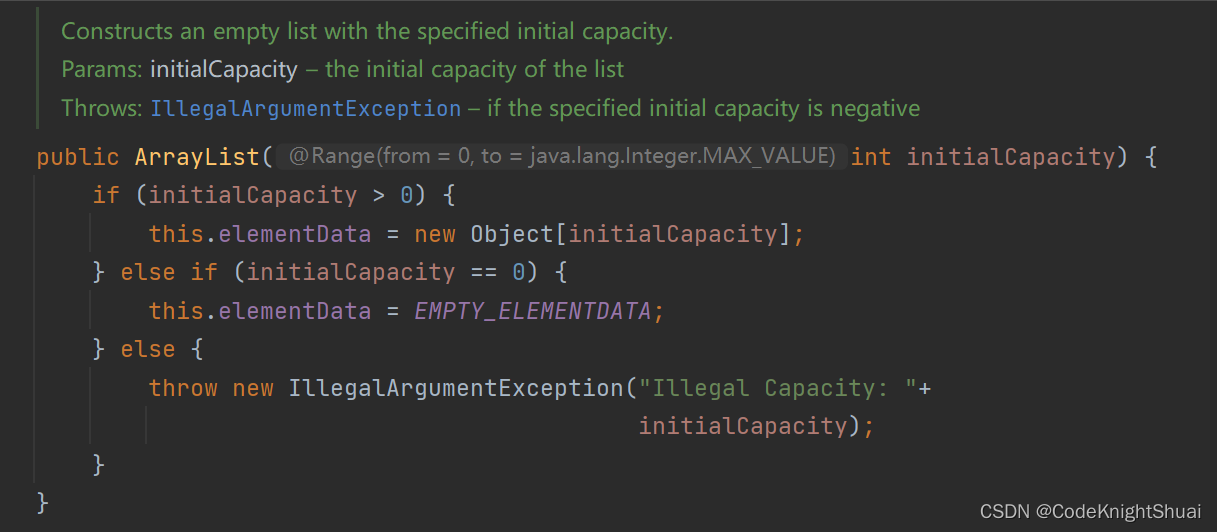
如果传入的数值大于0,则数组的容量就是传入的数值
如果传入的数值等于0,则给一个空数组{}
如果传入的数值小于0,则抛出异常
③参数为一个类
LinkedList<Integer> list = new LinkedList<>();
list.add(1);
list.add(2);
list.add(3);
ArrayList<Integer> arrayList= new ArrayList<>(list);
分析源码:
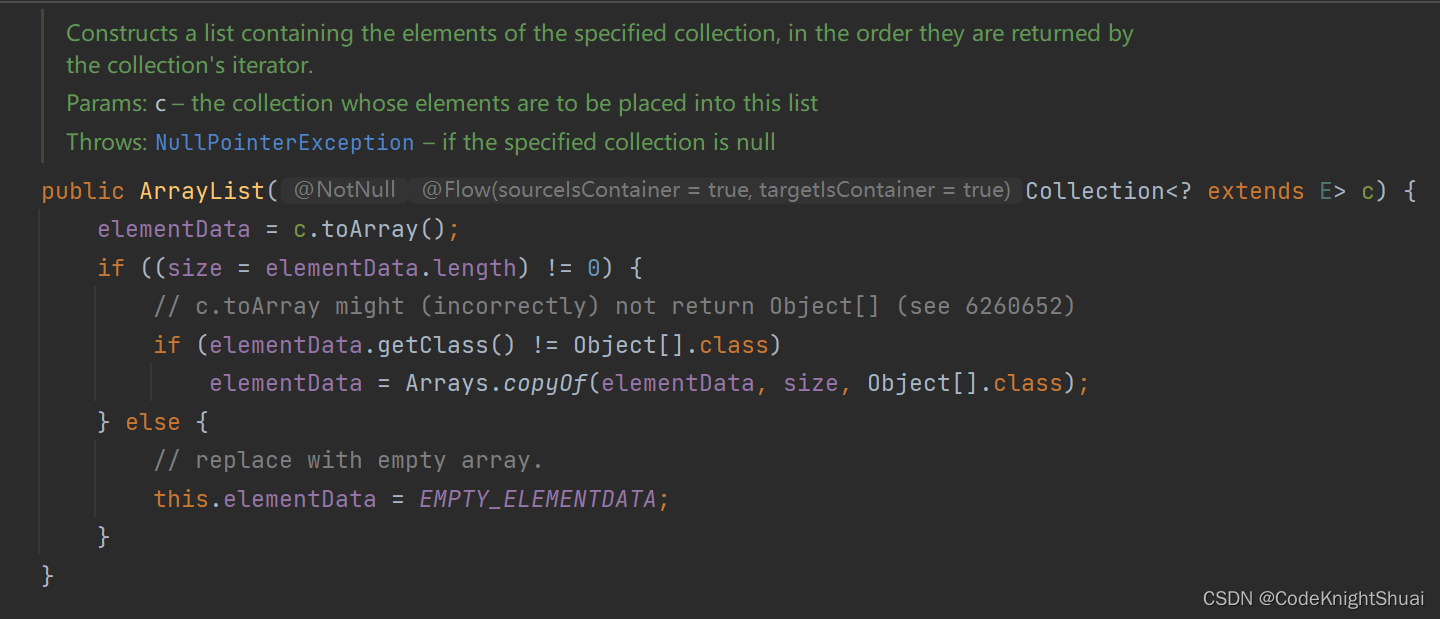
利用其他Collection构建ArrayList,Collection<? extends E> c,把另一个实现Collection接口的类的集合拿过来作为参数,其中c的类型一定是E或者E的子类。
- 当调用无参构造器实例化对象的时候,此时的数组是一个空数组{},若此时调用add方法则会扩容。
public static void main(String[] args) {
ArrayList<Integer> arrayList = new ArrayList<>();
arrayList.add(1);
}
在上述情况下,第一次调用add方法时,会给arrayList扩容,给其底层的elementData分配内存,大小为10。



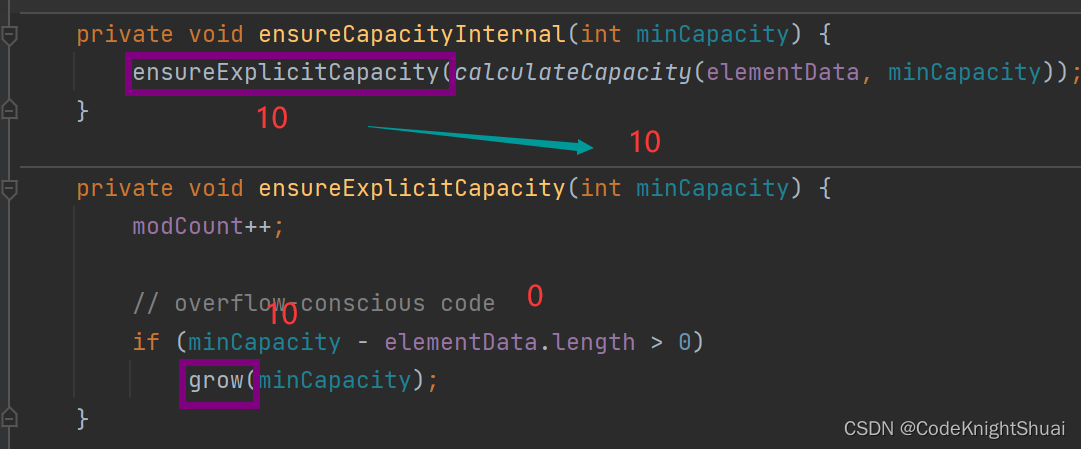
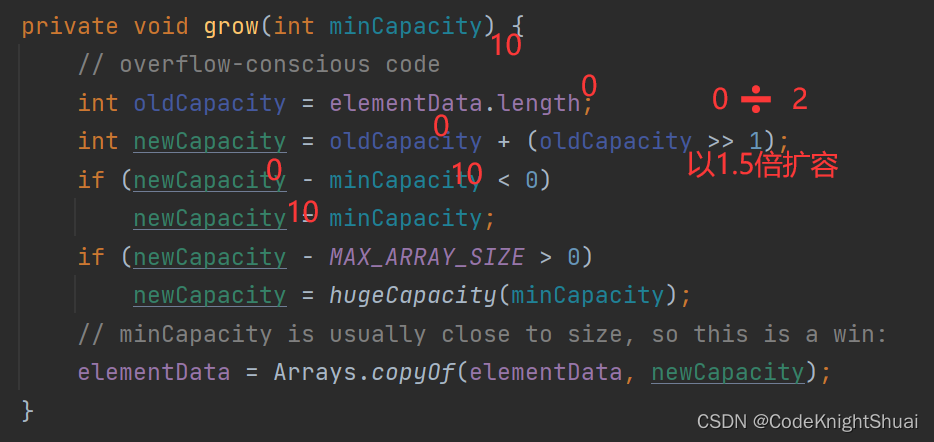
总结:虽然一开始,代码没有分配内存,但是当第一次add的时候,会走到grow方法里分配内存大小,此时elemdata数组最后分配的大小长度是10。
- 遍历ArrayList的四种方法
public static void main(String[] args) {
ArrayList<Integer> arrayList = new ArrayList<>();
arrayList.add(1);
arrayList.add(2);
arrayList.add(3);
arrayList.add(4);
//方法1:toString方法
System.out.println(arrayList);
//方法2:for-each方法
for (Integer x: arrayList) {
System.out.print(x + " ");
}
System.out.println();
//方法3:for循环+下标
for (int i = 0; i < arrayList.size(); i++) {
System.out.print(arrayList.get(i) + " ");
}
System.out.println();
//方法4:迭代器
Iterator<Integer> list = arrayList.iterator();
while (list.hasNext()) {
System.out.print(list.next() + " ");
}
}
分析:
①toString方法,说明重写了toString方法
但是ArrayList里面并没有重写toString,于是去寻找其父类 AbstractList,也没有重写toString方法,于是去找AbstractList的父类AbstractCollection,终于AbstractCollection中重写了toString方法,就这样被继承到了ArrayList中。

②for-each方法
此时arraylist里面的元素类型是Integer类型。
③for+下标
通过ArrayList中的get(i下标)的方法来遍历数组
④迭代器listIterator
迭代器是设计模式的一种
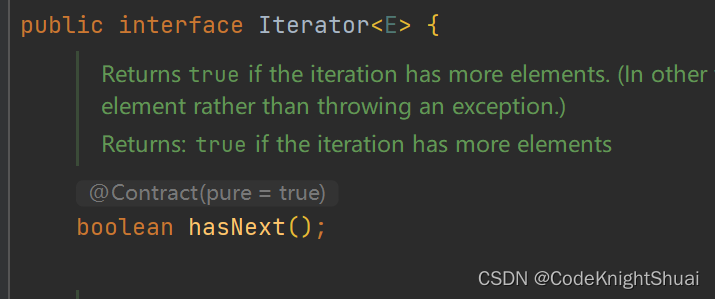

- ArrayList常见操作中的remove和subList方法
①注意E remove(int index) 与 boolean remove(Object o)的区别【方法重载】
删除下标为index位置的元素,并且返回这个元素。
删除元素为o的那个元素,返回值是布尔类型。
那么 remove(1);到底是删除下标为1的那个元素,还是元素值为1的那个元素呢?
public static void main(String[] args) {
List<Integer> list = new ArrayList<>();
list.add(1);
list.add(2);
list.add(3);
list.remove(1);
System.out.println(list);
}
运行结果:

分析:此时remove中的参数1识别为下标,而不是对象。那么要删除元素值为1的那个元素如何删除?
public static void main(String[] args) {
List<Integer> list = new ArrayList<>();
list.add(1);
list.add(2);
list.add(3);
list.remove(new Integer(1));
System.out.println(list);
}
运行结果:

分析:list.remove(new Integer(1));,传入对象,则可以区别开。
②subList方法:返回值是List,截取部分list
LIst< E > subList(int fromIndex, int toIndex)
public static void main(String[] args) {
List<Integer> list = new ArrayList<>();
list.add(1);
list.add(2);
list.add(3);
list.add(4);
List<Integer> sub = list.subList(1,3);
sub.set(1,999);
System.out.println(sub);
System.out.println(list);
}
运行结果:

分析: sub.set(1,999);,sub和list的对应位置都变成999,这也说明虽然构成一个新的list返回,但是和ArrayList共用一个elementData数组。
- 运用ArrayList知识编程
题目:s1 = “Welcome to world!” ; s2 = “come!”,去除s1中s2包含的字符,则打印输出"Wl t wrld"
代码:
public static void main(String[] args) {
String s1 = "Welcome to world!";
String s2 = "come!";
ArrayList<Character> list = new ArrayList<>();
for (int i = 0; i < s1.length(); i++) {
//看s2中是否包含s1中的字符,所以逐一取出s1中的字符
char ch = s1.charAt(i);
if (!s2.contains(ch + "")) {
//contains的参数是CharSequence,所以要把字符变成字符串
list.add(ch);
}
}
for (int i = 0; i < list.size(); i++) {
System.out.print(list.get(i));
}
}
运行结果:

- 杨辉三角(力扣118)
分析:
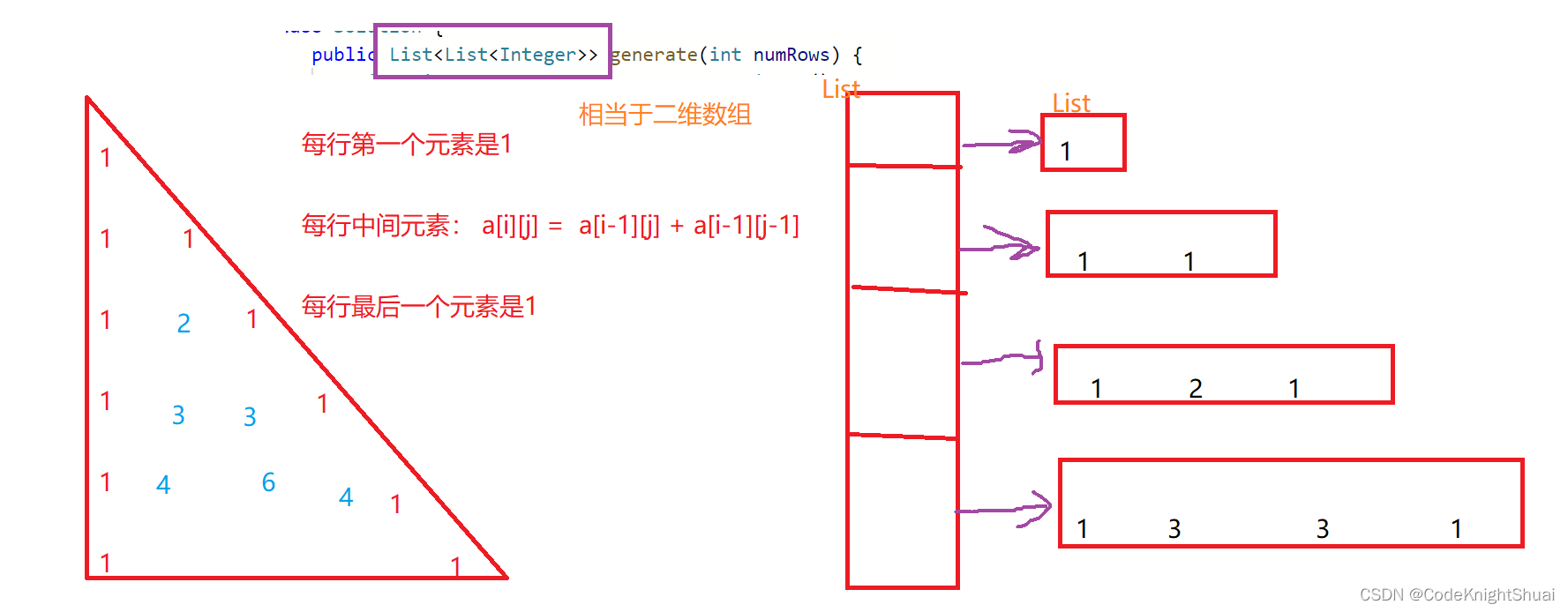
代码:
class Solution {
public List<List<Integer>> generate(int numRows) {
List<List<Integer>> ret = new ArrayList<>();
List<Integer> row1 = new ArrayList<>();
row1.add(1);//第一行
ret.add(row1);
for(int i = 1; i < numRows; i++) {
List<Integer> curRow = new ArrayList<>();
//每行第一个元素
curRow.add(1);
List<Integer> preRow = ret.get(i - 1); //获取上一行
//每行的中间元素,则要获取上一行
for(int j = 1; j < i; j ++) {
int x = preRow.get(j) + preRow.get(j - 1);
curRow.add(x);
}
//每行最后一个元素
curRow.add(1);
ret.add(curRow);
}
return ret;
}
}
- 删除排序数组中的重复项(力扣26)
分析:
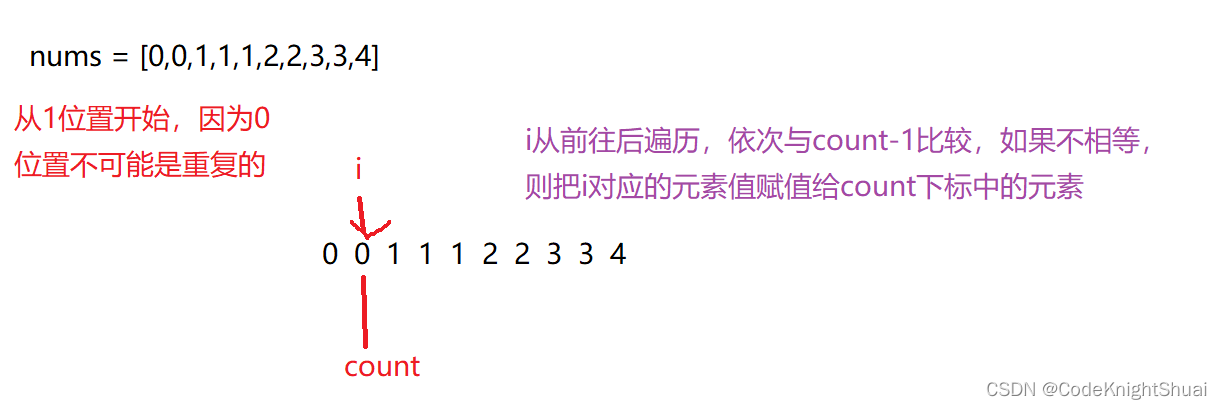
代码:
class Solution {
public int removeDuplicates(int[] nums) {
int count = 1;
for(int i = 1; i < nums.length; i++) {
if(nums[i] != nums[count - 1]) {
nums[count] = nums[i];
count++;
}
}
return count;
}
}
- 简单的洗牌算法
封装牌类
package demo4;
//封装牌
public class Card {
private String suit; //花色
private int rank; //牌值
//带参数的构造方法
public Card(String suit, int rank) {
this.suit = suit;
this.rank = rank;
}
//get和set方法
public String getSuit() {
return suit;
}
public void setSuit(String suit) {
this.suit = suit;
}
public int getRank() {
return rank;
}
public void setRank(int rank) {
this.rank = rank;
}
//重写toString方法,为了更好打印输出
@Override
public String toString() {
return "{" +suit + rank + "}";
}
}
游戏类:(实现买牌和洗牌)
package demo4;
import java.util.ArrayList;
import java.util.Random;
public class Game {
//牌的四种花色
public static String[] suits = {"♥","♠","♦","♣"};
//买一副牌
public ArrayList<Card> buyCard() {
ArrayList<Card> list = new ArrayList<>();
for (int i = 0; i < 4; i++) {
for (int j = 1; j <= 13; j++) {
list.add(new Card(suits[i],j));
}
}
return list;
}
//洗牌
public void shuffle(ArrayList<Card> list) {
Random random = new Random();
for (int i = list.size() - 1; i > 0; i--) {
int j = random.nextInt(i); //在当前牌之前随机取一张牌交换
swap(list,i,j);
}
}
//交换牌
private void swap(ArrayList<Card> list, int i, int j) {
Card tmp = list.get(i);
list.set(i,list.get(j));
list.set(j,tmp);
}
}
测试类:调用游戏类方法,并发牌
package demo4;
import java.util.ArrayList;
import java.util.List;
public class Test {
public static void main(String[] args) {
Game game = new Game();
//买牌
ArrayList<Card> list = game.buyCard();
System.out.println(list);
//洗牌
game.shuffle(list);
System.out.println(list);
//发牌 (三个人,每个人轮流抓5张牌)
//3个人,每个人手里的牌
List<Card> people0 = new ArrayList<>();
List<Card> people1 = new ArrayList<>();
List<Card> people2 = new ArrayList<>();
//具备关联关系,利用二维数组
List<List<Card>> hands = new ArrayList<>();
hands.add(people0);
hands.add(people1);
hands.add(people2);
//外层:每次发5张牌
for (int i = 0; i < 5; i++) {
//内层,一共3个人
for (int j = 0; j < 3; j++) {
hands.get(j).add(list.remove(0));
//每次都是揭0下标的牌,删除0下标的值,会返回0下标值对应的那张牌
}
}
System.out.println("发牌了!");
for (int i = 0; i < 3; i++) {
System.out.println(hands.get(i));
}
}
}
运行结果:

对于发牌的分析:
